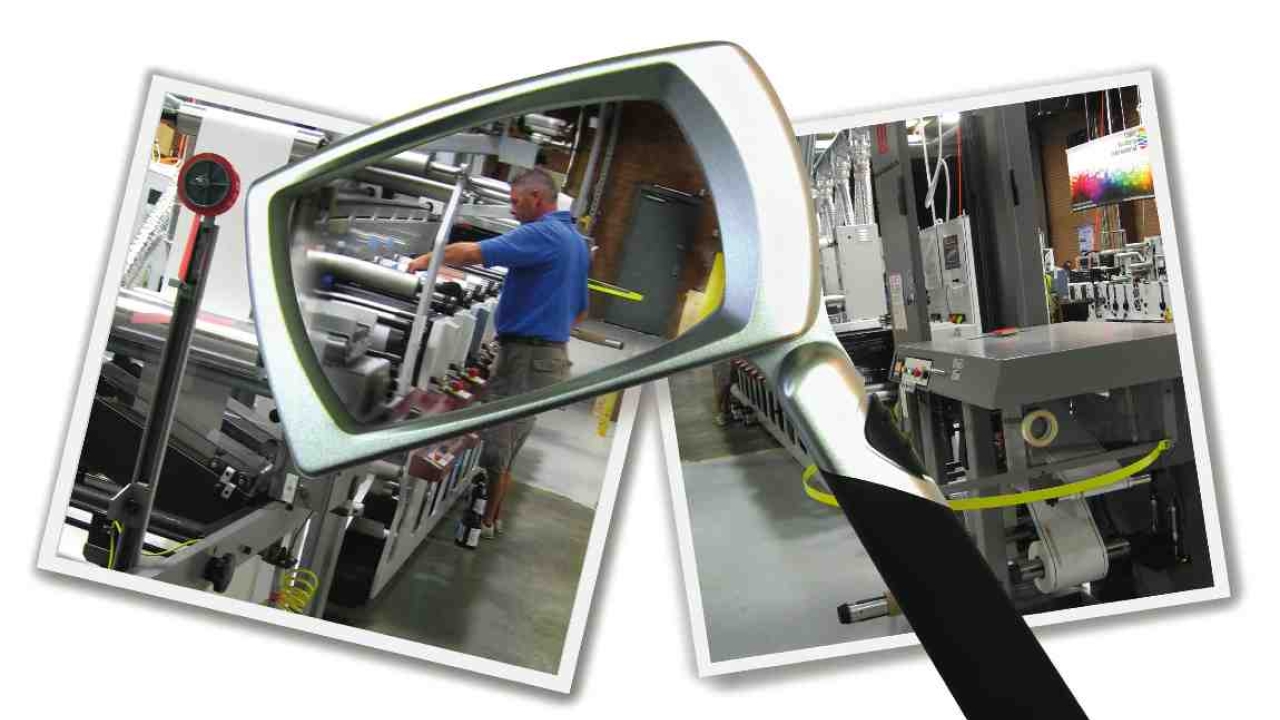Beyond the Obvious

Craig Thomson of Martin Automatic looks at some of the less obvious benefits of automatic roll changing on narrow- and mid-web printing presses.
Case studies clearly substantiate the value of automatic roll change in narrow- and mid-web printing operations. These include increased production and lower substrate waste, both of which impact on the ROI analysis. However, automation impacts many other facets of the printing operation that are not readily measured, and collectively they represent a significant overall operational improvement.
Re-use of short rolls
Partially used rolls containing less than 200 meters are often considered scrap and are either recycled or sent to the landfill. In addition to wasting 200 meters of usable substrate, it costs additional money to dispose of these rolls. With automation these rolls can be used for cleanups, make-readies, or actual production runs. Waste is minimized and profits are maximized, and it’s a pre-emptive way to be more environmentally responsible.
Buying on an exact program
A manual roll change can consume upwards of 100 meters or more of substrate plus ink, which necessitates running a substantial overage to achieve the required sellable product. If a job has five roll changes, this could represent 500 meters or more of extra substrate and ink just to complete the job. Automation wastes only a single make-ready and start-up, with virtually all of the subsequent rolls saleable. Overage is cut to as little as 3%, which is especially important when using expensive substrates and inks.
Buying substrate and ink on an ‘exact program’ can be a powerful competitive advantage, enabling smaller companies to compete head-to-head with larger printers that maintain larger inventories of substrates and inks.
Roll edits
Manual roll changing requires flagging the take-up rolls for edits to remove the unusable or substandard impressions. At best flagging is an inexact process that necessitates careful offline inspection. With roll change automation the only edit required is at the first start up. From that point on, production is continuous and depending on the number of roll changes in a job, automation could save 20% to 30% in post production editing labor.
Consistent quality
Eliminating manual roll changes improves web tension, and printing speed remains constant, stabilizing images color throughout the run. There is no need to clean the plates during the print run because there is less chance of damaging solids build up. Plates perform better and last longer.
Production at process speed
Manual roll changes run the risk of having to re-web the press, which often results in slower press production speeds being used. Automatic roll changing allows the press to run at optimum process speed throughout the run, with a dramatic increase in daily production.
Consecutive numbering and barcoding
Manual roll changing on jobs requiring consecutive numbering and barcoding can waste 60 - 100 meters of substrate and ink to get everything matched up and in sequence again. This extra waste is eliminated with automated roll changing and consecutive numbering and barcoding are maintained without interruptions.
No shaft handling
Depending on the press unwind, manual roll change may require handling heavy shafts or using external lifting systems. On an automatic roll changer with integrated lift and load, the spindle is guided into the core and a push of a button lifts and moves the roll into place. This reduces the risk of operator injury and roll damage.
Extend the effective service life of UV bulbs
During manual roll changes, UV lamps are powered down to 20% - 25% of power, and the exposure shutters are closed, with the bulbs remaining in a standby mode. While the cost of the energy consumed in this standby mode may not be high, it is still consuming hours of the UV bulb’s useful service life without producing product. With automatic roll changing, the UV system, once powered up, remains so until the end of the run. There is no wasted energy in standby mode, and every hour of the useful bulb service life is dedicated to producing saleable product.
In conclusion
While the value of these less obvious benefits can vary from company to company, it is still there, and can help create a competitive advantage. It is time to look beyond the obvious and consider the benefits of automation in a more holistic way.
Stay up to date
Subscribe to the free Label News newsletter and receive the latest content every week. We'll never share your email address.

